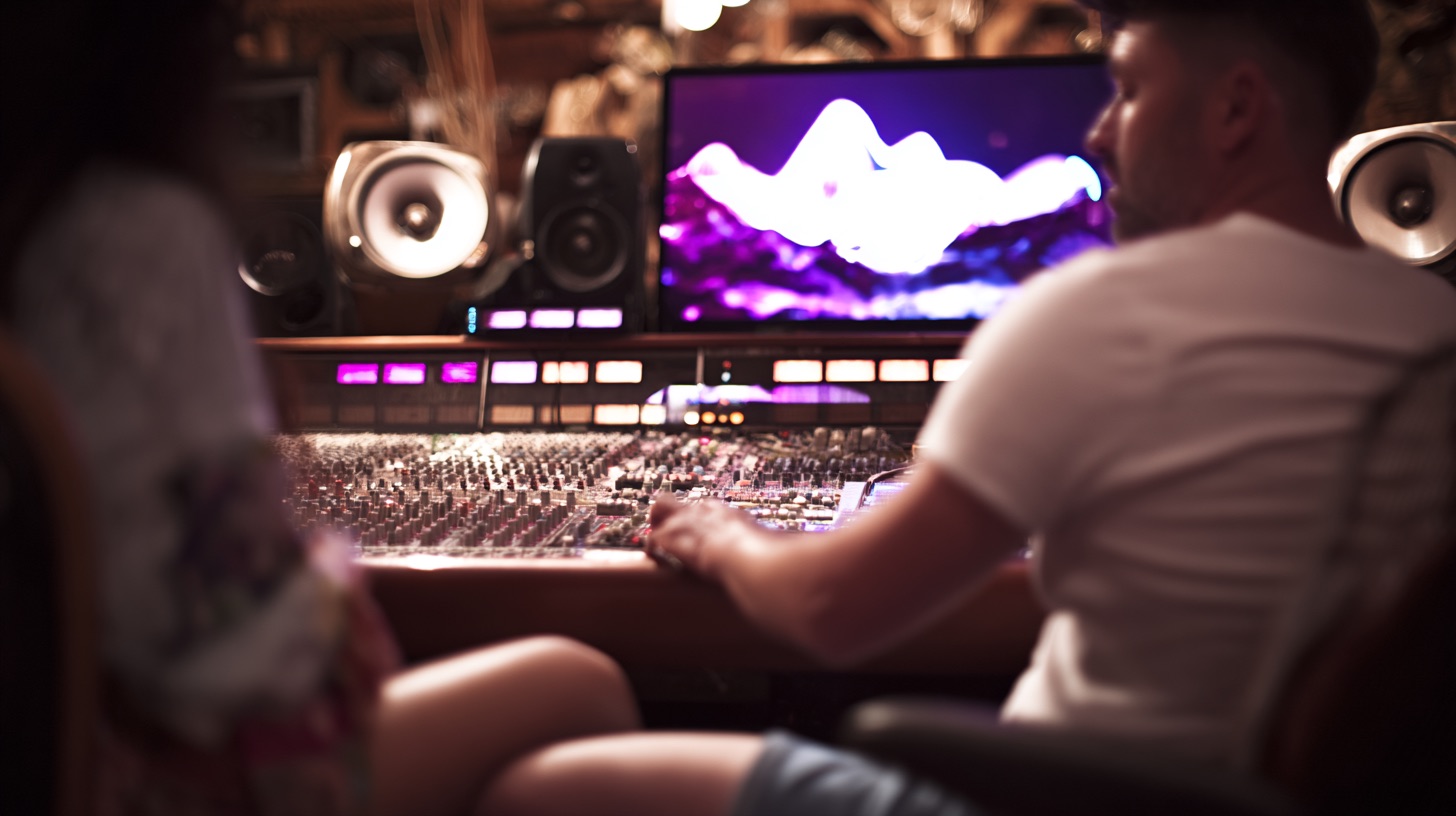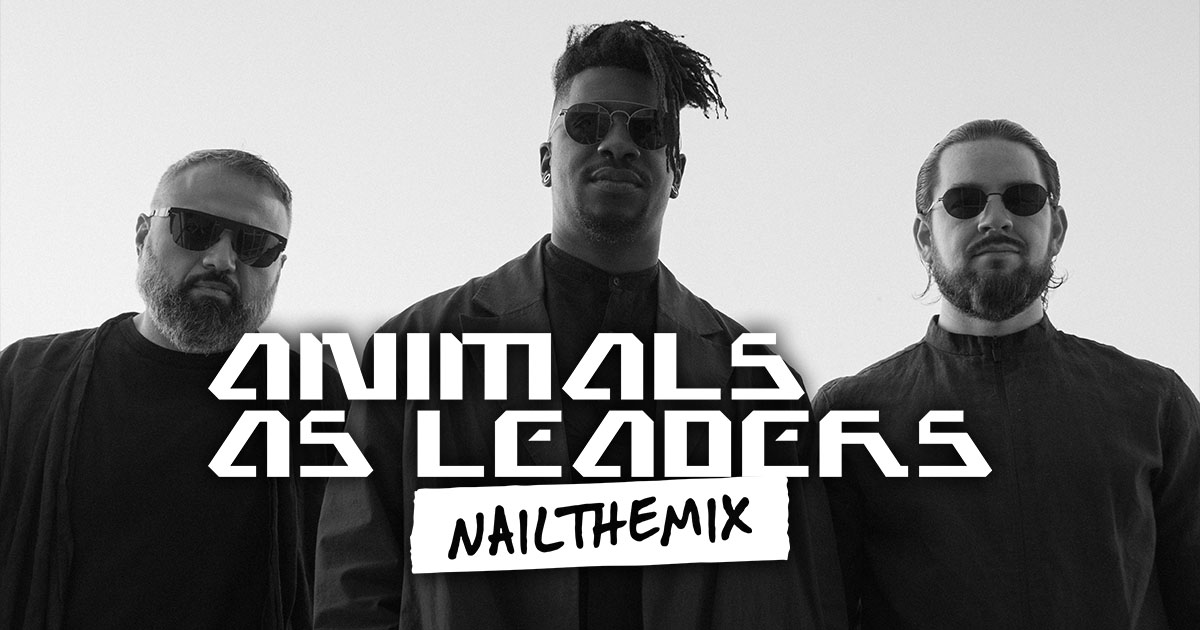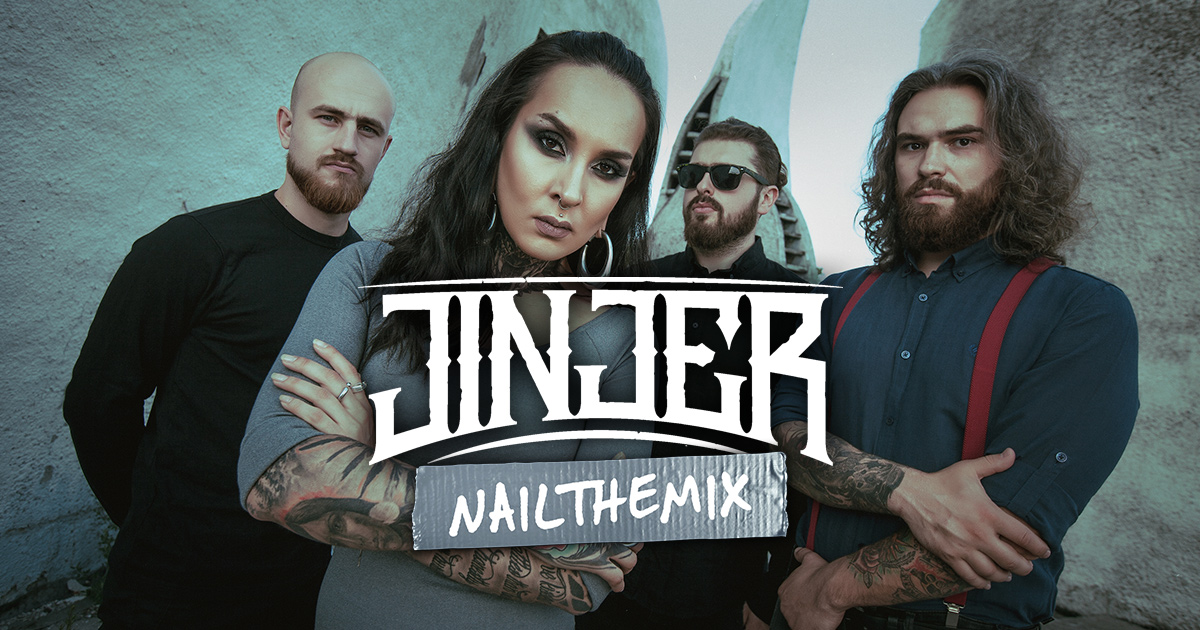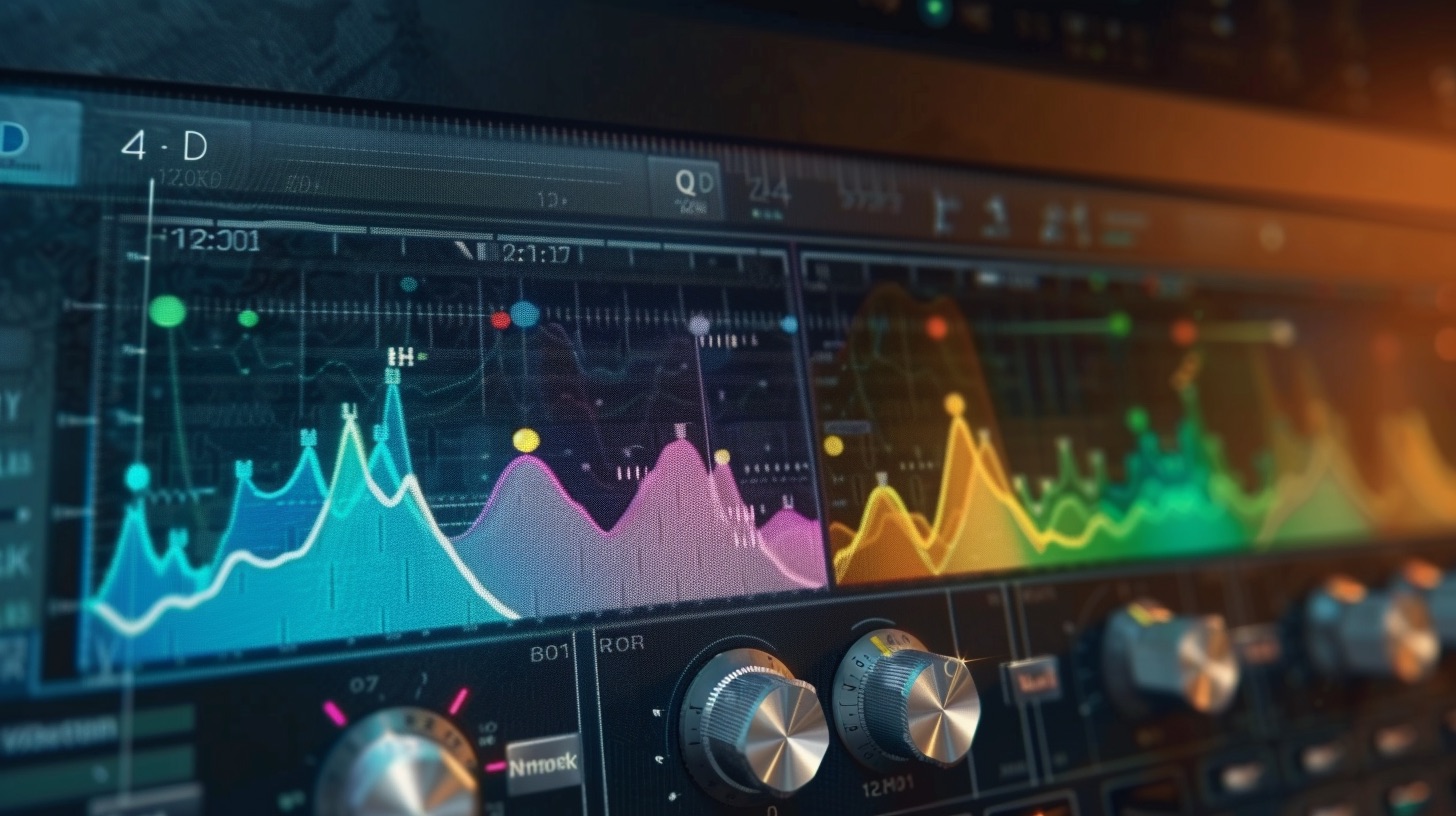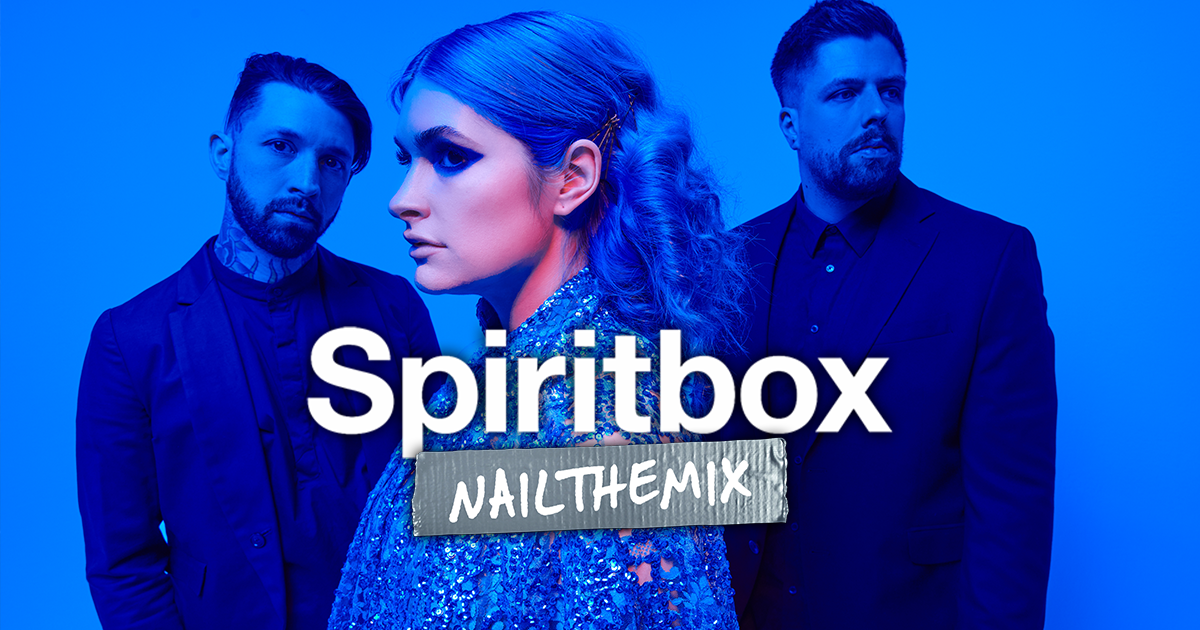
Mixing the Monstrous Guitars of Spiritbox’s ‘Holy Roller’
Nail The Mix Staff
Let’s be real, the guitar tone on Spiritbox’s “Holy Roller” is an absolute brick wall of sound. It’s sludgy, aggressive, and unbelievably heavy, yet somehow every note has clarity and bite. How do you even begin to craft a tone that massive?
In a deep-dive session for Nail The Mix, producer and mixer Daniel Braunstein broke down exactly how he built that monstrous guitar sound. Forget just slapping an amp sim on a DI and calling it a day. Daniel’s process involves aggressive pre-amp shaping, a secret octave-layering trick, and a smart, iterative EQ chain that carves out the perfect space in the mix.
Let’s break down the key techniques he used to bring the HEAVY.
The Foundation: Processing DIs Before the Amp
One of the biggest advantages of working with amp sims is the ability to process the clean DI signal before it ever hits the virtual amp head. Daniel leans into this heavily, treating the pre-amp stage almost like a virtual pedalboard to shape the guitar’s core character.
Adding Aggression with Pre-EQ
Before sending the DI signal from guitarist Mike Stringer—recorded clean into his Apollo interface—to the amp, Daniel wanted to inject more aggression. He used a simple EQ to boost the upper-mid frequencies. This move acts much like a classic Tube Screamer pedal, tightening the low-end and adding a percussive bite that helps the amp distort in a more focused and aggressive way. This is a fundamental concept in modern metal guitar EQ strategies that provides clarity before the gain stage even begins.
Shaping Transients with an Overdrive Pedal
Inside the Neural DSP Archetype plugin, Daniel loaded up his go-to Spiritbox preset. But before the amp and cab, he engaged the virtual overdrive pedal. The goal here wasn’t just to add more gain, but to control the dynamics of the performance. The “Holy Roller” riff is incredibly sludgy, and a super-sharp, pointy pick attack would have worked against that vibe. The overdrive pedal helps to smooth out and soften the initial transient of the pick hitting the strings, giving the chugs a “slugger” feel that enhances the groove. This kind of transient shaping is a powerful form of dynamic control.
The Secret Weapon: The Pitch-Shifted Octave Layer
The main rhythm tones sounded cool on their own, but Daniel had a trick up his sleeve to take them to another level of thickness. This is the secret to achieving that impenetrable, wall-of-sound character.
He duplicated the main rhythm guitar DIs onto new tracks. Then, using Pro Tools’ Elastic Audio, he pitch-shifted these new tracks down a full octave. He ran these octave-down DIs through a similar amp setting in Archetype but with one crucial difference: he disabled the overdrive pedal. This made the octave layer even thicker and sludgier, without the tightened-up character of the main tracks.
When blended underneath the main rhythms, this octave layer fills out the low-mids and adds an immense sense of power and beef, helping to create that signature crushing sound.
Want to hear this technique in action on the real multitracks? You can get them and watch Daniel’s entire mixing process in the Spiritbox “Holy Roller” Nail The Mix session.
Shaping the Tone on the Guitar Bus
With the core tone established, Daniel routed all the rhythm and octave guitars to a single bus for group processing. His approach is iterative, using an iterative chain of EQs to gradually shape the combined sound.
The Initial Carve with FabFilter Pro-Q
First up was a FabFilter Pro-Q for foundational moves.
- High-Pass Filter: He set it surprisingly low, around 40Hz. This cleans up unnecessary sub-rumble without thinning out the thumpy, bassy nature of the guitars.
- Low-Pass Filter: Rolled off the extreme top-end, but was careful not to cut too much. He intentionally left some of the “buzzy top end” in because it added a cool, metallic texture.
- EQ Boosts: He added a little bite around 2kHz and 4kHz, and a touch of sizzle near 10kHz.
Adding Body and Taming Scratchiness
After the first EQ, the tone felt a bit tinny and scratchy. A second EQ was brought in to add more body and fullness in the mids. Daniel noted that while you shouldn’t “mix with your eyes,” he uses the FabFilter analyzer as a quick sanity check to ensure the overall spectral balance isn’t wildly uneven.
The Iterative EQ Process
Daniel’s workflow is all about building on what’s there. Instead of going back and tweaking the first EQ, he just adds another one. A third EQ added some presence, and a fourth one added even more shape—boosting some 5kHz and 200Hz, while surprisingly cutting some of the 2kHz he had boosted earlier. This constant re-evaluation and forward-moving process is key to dialing in the perfect tone without getting lost in endless tweaking.
Subtle Stereo Widening
To give the guitars a bit more width, Daniel used the Waves S1 Stereo Imager. The key here was subtlety—”just a hair,” as he put it. Too much can make the tone feel phasey and weak in the center. He pushed the sides out just enough to add space and also lowered the output gain on the plugin itself to maintain a consistent level.
Accentuating the Details
A massive mix is often made in the small details. Daniel used a couple of clever tricks to make sure specific elements of the performance popped.
- Pick Scrapes: Mike provided separate overdubs of just pick scrapes. To make them cut through the wall of guitars, Daniel ran them through a different amp sim setup. By what he called a happy accident, he ended up running a cab sim into another cab sim, creating a unique, filtered sound that really poked out.
- Filter Effects: For a filtered guitar section, he simply used the same rhythm patch but engaged the filter on the Celia effects plugin. He made a great point about not overlooking default presets—they are often the developer’s idea of the best possible setting, and this one worked perfectly right out of the box.
Bringing It All Together
Crafting the guitar tone for “Holy Roller” was a masterclass in modern metal production. It wasn’t about finding one magic preset, but about a series of deliberate, layered decisions:
- Shaping the DI before the amp for aggression and dynamic control.
- Creating a massive low-end foundation with a pitch-shifted octave layer.
- Using an iterative chain of EQs on the bus to carve and shape the final tone.
- Making small, unique elements pop with dedicated processing.
These are incredible techniques you can start applying to your own mixes today. But imagine watching Daniel Braunstein apply every single one of these moves, explaining the “why” behind each decision, and giving you the full multitracks to mix yourself. With Nail The Mix, you can do exactly that.
Spiritbox on Nail The Mix
Daniel Braunstein mixes "Holy Roller"
Get the Session
See how the pros build world-class tones from the ground up and learn how to unlock your own sound beyond presets. If you’re ready to dive in, grab the Spiritbox “Holy Roller” session and hear the madness for yourself.
Get a new set of multi-tracks every month from a world-class artist, a livestream with the producer who mixed it, 100+ tutorials, our exclusive plugins and more
Get Started for $1
